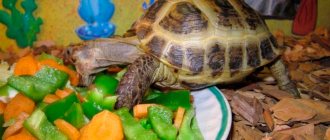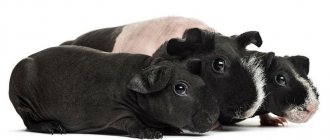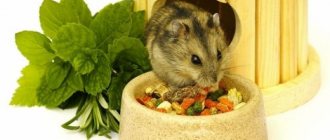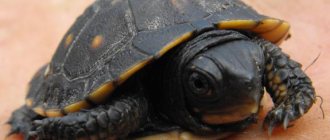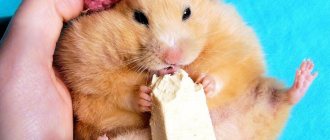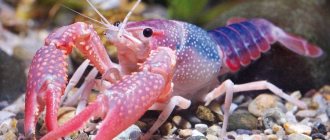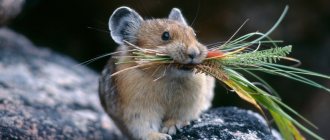Types of land turtles
The most common in Russia is Central Asian. There are 37 varieties in nature. Distributed in Africa.
Central Asian
In nature they hibernate. Small in size - up to 20 cm. The carapace is rounded, yellow-brown. Diet: 90% plant based.
Mediterranean
The young of this breed do not survive well when kept at home. Choose an adult. It feeds on earthworms, snails, and plant food. Grows up to 28 cm. The carapace scutes form rings with a dark outer edge.
Coal (red-legged)
Requires high humidity and temperatures from 27 degrees. Grows in captivity up to 55 cm. Food: fruits, vegetables, meat.
Leopard print
A body of water is required. A large turtle grows up to 60 cm. The color of the shell is light brown with dark spots. The diet consists of only grass. Juicy vegetables and fruits are dangerous to health.
Radiant
Size up to 40 cm. Very beautiful domed shell. The dark scutes have yellow spots in the shape of stars. The diet contains green parts of plants.
Other types
gear
red-headed flat
star-shaped
ivory
musky
Balkan
Egyptian
Purchase and selection
The best-selling breed is the Central Asian. Small in size, does not require special care. Larger turtles are not as easy to keep. They will need a separate large area.
Tips for choosing an animal:
- The phase of greatest activity occurs in the morning and evening. Turtles are also most active in the warm summer months. At this time, it is clear that a healthy pet is offered for sale or a sick one. Note:
- behavior, coordination and activity;
- no damage;
- color without strange spots;
- shell scutes tightly adjacent to each other;
- body shape;
- plaque in the mouth, it should not be there, just like viscous saliva;
- dry nose (discharge indicates illness).
- Try to find professional breeders.
- Choose a juvenile or adult turtle. The baby will require additional care and is susceptible to diseases.
In summer, you can transport the turtle in a cardboard box filled with paper. In winter, place a heating pad in the carrier.
Characteristics and varieties of turtles
The name of the reptile comes from the Latin word Testudinidae, which means tile or brick. The carapace is a hard membrane that covers the back. The tissue covering the abdominal region is called the plastron.
The protective properties of the shell allow it to withstand a load exceeding the animal’s own weight by 200 times.
The size of adult turtles depends on the species they belong to. In the wild, there are reptiles up to 10 cm long and giant representatives up to 900 kg. Read more: types of domestic turtles.
The shell of a turtle can withstand a weight 200 times greater than the weight of the turtle itself.
When choosing a pet, you should take into account the conditions of detention and the size of the reptile. Among all the known land representatives of this genus, several species of turtles can be distinguished:
- Leopard print. It is characterized by the spotted color of its shell and a body weight of 50 kg.
- Central Asian (steppe). Representatives of this species rarely grow more than 20 cm. This domestic land turtle is distinguished by a rounded yellow-brown shell. Its unpretentiousness in care has made it the most accessible reptile among its kind for home breeding.
- Asian. It has two subspecies: brown and depressed.
- Mediterranean. Reaches 35 cm in length. It became especially famous in European countries.
- Radiant. It is a rare species native to the Madagascar Islands. It owes its name to the regular yellow lines on its shell.
Not all turtles can be kept in an apartment due to their size and the required care conditions. The most affordable species for terrarium maintenance is the Central Asian tortoise.
How to keep a land turtle
The most common mistake that turtle owners make is keeping it on the floor. Possible consequences:
- colds from drafts and cold coverings;
- may crawl into a corner and not get out or get stuck under furniture;
- dust getting into the nose will damage the lungs and respiratory tract;
- receiving a variety of injuries if, for example, the owner steps on it carelessly.
A specially equipped place of residence is required - a terrarium.
Terrarium
Caring for a land turtle at home begins with arranging the home. A cardboard box is also suitable as a temporary option, but you need to set up a terrarium for your pet:
- Sizes from 100 cm in length, 50 in width and 30 in height will allow the animal to move freely and eliminate the possibility of escape.
- When arranging, leave plenty of free space. Avoid creating unnecessary barriers.
- Install the future home in a warm place at a height of 20 cm from the floor to protect it from drafts.
- Leave room for a mini pool or large drinking bowl. The turtle is able to absorb water from the outside. Liquid improves bowel function.
The larger the pet, the larger the size of the terrarium required.
If you choose a former aquarium for your home, wash it thoroughly with disinfectant solutions.
Priming
Start arranging the terrarium by covering the bottom. Aquarists prefer several options:
- A mixture of earth and coconut fibers. If the soil is not purchased, first heat it to get rid of parasites.
- Sawdust. This filler is sold in pet stores.
- Coarse gravel.
- Special substrates. Formulations for reptiles are allowed.
The thickness of the layer is from 3 to 15 cm. It changes as it gets dirty.
And also put large flat stones in the terrarium. The turtle will bask on them and grind off its claws.
Do not use sand and small stones as soil; turtles swallow them and get a blockage in their intestines.
Water
Install a special drinking bowl with fresh, warm drinking water in the terrarium. To maintain the temperature of the liquid, place it under a lamp.
For the drinking bowl, take a large, heavy and almost flat container. Low sides will allow easy access to the water, and the weight will prevent it from tipping over. Keep the water level no higher than the middle of your pet's shell.
House
It is necessary to build a shelter in the habitat of a land turtle. Make it yourself from half a flower pot (box or cardboard) or purchase it at a specialty store.
Place the house in the shade.
Choose washable materials for the house so that if it gets dirty, it can be easily cleaned.
Plants
When choosing plants to decorate your terrarium, consult with the seller so as not to accidentally place a poisonous flower.
Place the greens in pots, sprinkle the ground with stones. Protruding roots should not be an obstacle to movement. Do not spray vegetation with pest poisons.
The pet chooses corner areas for rest. Leave them free.
To decorate the terrarium, choose plants that are not dangerous, such as aloe, echmea, and gusmania.
Temperature
Turtles are cold-blooded, so they need to constantly maintain a certain temperature. During the daytime, 35–38 degrees in the light and 25–30 in the shade.
If the temperature drops sharply, the animal may become ill and die.
Heating
The desired temperature in the terrarium is achieved using a heating lamp. You can use thermal mats and thermal cords, but be sure to run them through a temperature controller to prevent excessive heat.
Carefully remove the wires so that the turtle does not get to them.
Lamp
Install 2 lamps in the terrarium:
- Incandescent lamp up to 60 Watt. Used for lighting and heating. It is installed in the corner opposite from the house at a height of 20 to 40 cm, depending on the power. Place a large flat stone or ceramic tile under the lamp. Turn on the lights during the day for 8–10 hours. Turn it off at night.
- Ultraviolet lamp. Ensures the absorption of calcium and the production of vitamin D. Without such a lamp, the risk of rickets is high. Installed 40 cm above the terrarium. The rays do not pass through glass.
If the temperature drops significantly at night, install an additional infrared lamp.
Lighting Tips:
- Maintain different temperature zones. The pet will choose the most comfortable place itself.
- A UV lamp gives the greatest effect to a warmed-up pet.
- Light from above with a fluorescent lamp, similar to natural light.
- Measure the temperature not on the floor, but at the height of the shell.
- The heated area of the terrarium should be larger in size than the pet. Otherwise, the turtle will not warm up completely and will get burns.
- The rhythm of day and night is extremely important, try to turn the lights on and off at the same time.
An ordinary lighting or energy-saving lamp does not provide sufficient heat.
Dimensions and arrangement of the terrarium
Taking into account the fact that a turtle can grow up to 20cm in length, the dimensions of the terrarium range from 100x50x30cm and no less. It should be spacious enough for the turtle to actively move around. It is not as slow as some people think, and it is impossible to have artificial barriers in the form of sticks or branches in the terrarium - these are all unnecessary.
The bottom of the terrarium is covered with a layer of sand and clay, but you cannot take sand from the yard or a nearby construction site, as it can introduce some kind of “infection.” The simplest, most affordable and reliable option is sawdust purchased at a pet store. They are changed as they become dirty, and the sand should be changed 1-2 times a month.
How to care for land turtles at home
Care is simple, follow a few rules and the animal will be active and healthy:
- Keep your terrarium clean.
- Diversify your diet.
- Bathe your pet every week.
- Watch the claws and beak.
- Take walks.
Feeding
The basis of the diet of a land turtle is plant foods:
- 75–80% greens;
- 20–25% fruits and vegetables.
A serving is half the turtle's body volume.
In warm weather, be sure to provide outdoor plants and wash them thoroughly so as not to infect the turtle with worms. Especially useful for the animal:
- Dandelion. All parts of this plant contain vitamin A, which is essential for your pet.
- Plantain leaves. The high fiber content helps improve bowel function.
- Salad. Your favorite delicacy can also be grown in pots in winter.
And also suitable: clover, leaves of coltsfoot, sorrel, petunia, honey, thistle and rhubarb leaves.
Among vegetables, turtles eat carrots, cucumbers, zucchini, bell peppers, and pumpkin. It is better to grate hard vegetables, give soft ones in pieces.
Feed cabbage with caution. May cause gas formation.
Fruits in large quantities cause bloating, feed them carefully. Better than apples.
Add fresh mushrooms and legume sprouts to the food once a week to meet the protein needs of the animal.
Feed the animal from a clean surface so that soil does not get inside. Diet diversity improves health and increases life expectancy. It is convenient to prepare a salad from various herbs, fruits and vegetables. You can store it in the refrigerator, if necessary, reheat it.
Some breeds need to be fed animal products. Such as minced meat.
You cannot give:
- food from the table;
- potato;
- citrus fruits, especially peels;
- whole eggshell;
- bread;
- milk;
- grasshoppers, locusts;
- poisonous mushrooms.
Feed young turtles up to two years old daily, adult turtles once every 2-3 days.
Vitamins
A complex of vitamins and minerals can be purchased at pet stores. Follow the instructions on the package. Many people cook everything themselves.
Mineral supplements at home:
- carbonate;
- bone flour;
- ground eggshells;
- glycerophosphate.
Serving: 100 mg per kilogram of pet's weight.
The necessary vitamins A, B12, D3 must come from natural sources (UV lamp, food).
It is strictly contraindicated to give oil preparations and vitamin D2 to animals.
Drink
There will be enough drinking water in the drinking bowl. Change it every day to keep it clean. Don't forget to place it under a lamp to keep it warm.
The turtle drinks through the skin.
Walks
Walking in the summer is a must. Despite its slowness, a pet can get lost in the grass very quickly. Fence an area where the animal can roam with an enclosure.
Animals get sick from the cold.
Deepen the enclosure into the ground, because turtles dig under the ground.
Hygiene
Clean the terrarium once a week: wash the house, large stones, and driftwood. Clean or replace primer every 2-3 months. Wash the bowl and drinking bowl every day.
Do not wash terrarium items in a shared sink.
Caring for a land turtle during the molting period is low. Do not rub creams or oils into the shell. These actions will not give any effect. If your skin is dry, non-greasy creams for reptiles will help. Apply to dry areas daily for a week. Shedding is usually painless. It is enough to bathe in a weak solution of soda, 1 teaspoon per liter of water. It is carried out no more than twice.
Turtles love swimming. Despite the presence of a drinking bowl, bathe the animal once a week if you use succulent food, and twice if you use dry food. After purchase, carry out water procedures every day for a week, as animals are often dehydrated. Bathing will not only cleanse the shell, but also replenish the body's water balance.
Take a basin and fill it with warm water (about 30 degrees) to the middle of the shell. Leave the turtle in the container for 40 minutes. After bathing, dry the animal with a soft towel or napkin.
Bowel movements are completely normal at this time.
Do not release a wet turtle onto the floor.
Trimming claws is an important step in grooming. If kept at home, the beak and claws can grow so long that they begin to interfere with movement and feeding. Get yourself some sharp wire cutters. Carry out pruning in the light. Having retreated 2-3 mm from the blood vessels, bite off the excess part. If blood appears, treat the damaged area with a solution of potassium permanganate.
The beak is not cut off, but broken off in small pieces. When the growths fall off, carefully trim the edges with a file. If a vessel is caught and blood appears, contact a veterinary clinic.
Large matamata predator
To understand what pet turtles are like, it’s worth meeting a representative of the Matamata breed. It reaches 45 cm in length and has a rather bright and unusual appearance. The upper part of the shell has a pyramidal shape, the head is flat and triangular, at its end there is a flexible nasal process. On average, a reptile lives 50-60 years.
The matamata turtle has a unique appearance
Matamata is an omnivore; it prefers food of animal origin. He loves mollies, goldfish, earthworms, and guppies. Does not disdain even small mice and birds. It is best to feed it by introducing several fish into the aquarium: this way the turtle will have a choice, and it will not lose its hunting skills.
Since the turtle grows quite large, the aquarium should not interfere with its development as it should. Matamata is not as active as the European marsh turtle, but it is better to choose larger containers for it. Main characteristics of an aquarium for a matamata turtle:
- The aquarium should be deep - 200-250 liters.
- The acidity of the water is 5.0-5.5, you can add a little peat or tree leaves.
- Water temperature - from +28 °C to +30 °C. It should be stable throughout the year; you should not lower it in the fall or winter.
- The soil of the aquarium should be sandy so that the turtle has the opportunity to bury its head in it. In addition, plants and algae that the matamata is accustomed to in its natural environment can be planted in the sand. It is better to add driftwood, since due to its inactivity the turtle likes to lie on the bottom for a long time.
- Despite the fact that the turtle almost never comes out to bask on land, a lamp above the aquarium is still necessary.
Matamata does not like to be disturbed. She regards any contact with a person as a stressful situation. The turtle should be handled only to wash it or move it to another aquarium. It is not suitable for families with children who have pets to play with - the matamata does not tolerate such interaction.
Reproduction
Age of turtles ready for mating:
- females 10–12 years old;
- males 5–6.
Mating time is from February to August.
Before mating, separate the partners for two weeks. This will increase the male's interest, as will competition in the form of another male.
Maintain the temperature at 25–30 degrees. At lower rates, the male’s sperm will not mature.
The female builds nest holes, usually 2–3, lays up to 6 eggs in each and forgets about the offspring.
Pregnancy lasts 2 months. During and after gestation, the turtle requires increased nutrition.
Place the eggs laid in the hole in the incubator. The soil layer is 18 cm, the temperature is 29–30 degrees. At high temperatures there will be early development of the baby turtle. He does not get out of the shell and dies.
It takes about two months before hatching.
How to determine gender
Sex determination is possible from the age of 1.5-2 years.
Whether an adult is male or female is determined by the following characteristics:
- Body structure. Among the same yearlings, females are clearly larger and more rounded, while the male’s body is more elongated and oval.
- Abdomen. Plastron - the lower part of the shell in females is flat or slightly convex, in males it is concave. This feature is due to the gestation of eggs.
- Spurs. Leather growths on the thighs of males contribute to fixation on the female during the mating process. The female individual does not have them.
- The back of the shell. In males, the tail is curved towards the ground and almost completely covers it. In females the score is almost invisible.
- Tail. Is a sexual organ. In females it is thin and short, in males it is long and large.
- Cloaca. The female one is shaped like an asterisk and is located close to the shell. Male - longitudinal and closer to the tip of the tail.
- Eyes. Most often, yellow eye color is a sign of a female, and brown is a sign of a male.
- Behavior. Females are calm, males are aggressive. Only males participate in fights. Males are also characterized by mating dances and attempts to mount the female.
It is impossible to determine the sex by the claws, since their condition depends on the soil. In nature, males have longer and thicker hair, which simplifies the mating process.
Caring for the Cubs
Little turtles are fragile and vulnerable. Several rules will help increase the chances of their survival:
- Adults and cubs are kept in separate terrariums to avoid possible injuries caused by adults.
- For children, the floor is covered with sawdust. The temperature is maintained the same as for adults. The same goes for lighting.
- The cubs are fed with crushed plant food mixed with calcium.
Description
A low shell, from 3 to 20-25 cm long. Round and slightly flattened at the very top, similar to a pie.
The color of the carapace is brown-yellow-olive with vague outlines of dark spots - matching the color of the soil where it is found. The plastron is dark in color and has 16 horny scutes. There are also 13 horny scutes on the carapace, each with grooves. Their number corresponds to the approximate age of the turtle. 25 shields are located on the sides. The front paws have 4 clawed toes. The male has 1 horny tubercle on the back of the thigh. The female has 3-5 of them. Females are always larger than males. Hooked upper jaw. Under favorable conditions, it can live 40-50 years. The Central Asian turtle grows throughout its life.
Problems
When purchasing an exotic pet, do not forget about the following problems:
- Colds from drafts.
- Malfunctions of the digestive system due to ingestion of soil.
- Excess vitamins lead to diseases.
- Improper maintenance reduces lifespan.
Diseases
Pet turtles are easily susceptible to various diseases. Most often, owners encounter the following varieties:
- Rickets. The most common. Softening and deformation of the shell and skeleton due to lack of vitamin D. Use a UV lamp to prevent and treat. In advanced cases, a series of calcium injections will be required. Once the carapace is bent, it no longer straightens out.
- Tearfulness, swelling of the eyes. Develops due to a lack of vitamin A. Wash your eyes with chamomile infusion and drip Albucid. Contact your veterinarian, sometimes vitamin injections are required.
- Parasites. Through unwashed street vegetation, worm eggs enter the turtle. Treat with Albenazole.
- Cold. Breathing problems, white coating on the mucous membrane and viscous saliva. Treated with antibiotics.
You can avoid many diseases if you properly care for your pet.
Consult your veterinarian before treatment.
Hibernation
Regarding hibernation when kept at home, experts have not come to a common opinion. Some aquarists believe that hibernation should be like in nature. Others argue that when kept at home, such wintering is not necessary and even harms the health of the pet if the preparation is not carried out by a specialist.
Preparing for hibernation turtle:
- refuses food;
- becomes lethargic;
- trying to dig into the ground.
Under natural conditions, hibernation occurs in two cases:
- Drought. Lack of food.
- Cold or excessive heat.
Check the living conditions, feed your pet and adjust the temperature.
Feeding
In the wild, this reptile feeds mostly on plant foods and consumes small amounts of protein in the form of worms and snails.
The same diet must be provided to the pet at home. It should contain vegetables, fruits, as well as small insects and pieces of meat.
Feed the turtle once a day. The pet does not need water; the reptile’s body extracts liquid from juicy food.
Also read the article about what to feed land turtles.
Price
The cost of an individual varies from 200 rubles to 150,000 or more for rare species. The refusenik can be found on websites for free.
| Name | Price (rubles) |
| Greek, Mediterranean (Testudo graeca) | 2160–4800 |
| Leopard, Panther (Stigmochelys pardalis) | 3840–7680 |
| Indian starfish (Geochelone elegans) | 5000–12000 |
| Redfoot, Charcoal (Chelonoidis carbonaria) | 3840–4800 |
| Madagascar radiata (Astrochelys radiata) | 24000 |
| Central Asian (Agrionemys horsfieldii) | 500–3000 |
Prices depend on characteristics:
- floor;
- age;
- rarity of the species.
Where does it live in nature?
The habitat of this amphibian is concentrated in Central Asia, mainly in the steppe zones from China to Uzbekistan and Kazakhstan.
This species of amphibian prefers to live on sandy soils, but can be found on loamy lands. Basically, the turtle prefers to live in rocky and hilly areas where there is enough water and grass. They live in burrows, which they can dig themselves or move into ready-made ones.
Note! Despite the fact that representatives of this species live in arid areas, they, on the contrary, require areas with high levels of humidity so that they can easily dig through the ground with their paws and claws. If the soil is very dry and hard, then they will not be able to dig it out
This is interesting: Elephant turtle, its features and history - revealing the essence
Compatibility
Turtles are loners. In their natural environment, they gather in groups for mating and fighting. Keep turtles together only if there is no other option and they are of the same species and size. But even then conflicts arise. Different breeds require different conditions of maintenance.
Keep exotic turtles separately.
They can coexist with some iguanas in large vertical terrariums. If you try to make friends with a small reptile, the latter may lose its tail or paws. Turtle secretions are poisonous to snakes.
Locking turtles
Musk keel
This species is almost entirely aquatic, but turtles sometimes emerge from the water to bask. They have a convex, large head and a long neck. They also have a noticeable sharp beak and short legs. And these turtles have a sharp keel that runs down the center and the entire length of the shell.
Reddish mud turtle
Turtles live in ponds, in bodies of water with and without vegetation, although they prefer ponds with large vegetation. In nature, they live in streams and prefer clean, oxygenated water. They prefer sandy and dirty bottoms, as they hibernate, hiding in the mud.
Silt walleye
Cute turtles are found in calm waters with soft bottoms. Their bodies are long and narrow, their shells are dark brown, and their heads are white or yellow. They are completely enclosed inside their shells. They only need a small area for basking and it is not always used.
Flat
A relatively small, dark, flat turtle with a shell only 145-200 mm long. The flattened carapace has a wide median groove or depression bordered by two raised ridges (keels), and the wide plastron is pigmented black or dark brown.
Taming
To help your turtle eat from your hands, feed it while holding the food with your fingertips. Remember, once your pet gets used to this way of eating, it will begin to chase its owner.
Initially, turtles are not very friendly towards people. To wean your animal from biting, pick it up more often without making sudden movements.
Turtles have excellent hearing; when giving food or before bathing, make the same sound and the pet will begin to respond to it.
Animals remember and recognize their owner. They love to watch what is happening in the room.
Habits are quickly formed regarding feeding times and daylight hours. Not receiving food at the usual time, the pet will sigh and move its head in disappointment.
Heating and lighting
How to care for a land turtle so that it feels at home and is always healthy? This question interests many, especially novice breeders of these freshwater fish.
Land turtles require sufficient amounts of ultraviolet radiation. It protects animals from various diseases, and also improves the immune system of the reptile's body. For this reason, it is recommended to install two types of lamps above the terrarium - an incandescent lamp and an ultraviolet lamp.
The incandescent lamp will ensure that a constant optimal temperature is maintained in the amphibian’s house. Its power indicator should be 60-100 W. It is recommended to install the device at a distance of 35 centimeters from the surface. The temperature in the area above the lamp should be within 35 degrees, and the temperature in the unlit area should be 24 degrees.
Important! An aquarium with a land turtle must have an ultraviolet lamp. This device provides the reptile with vitamin D and calcium.
If it is not there, the animal may develop rickets and other serious diseases.
It is recommended to install the ultraviolet lamp 40 centimeters above the turtle. The fact is that the glass surface will impede the penetration of light and all necessary substances.
What not to do
- Color the shell.
- Allow it to hibernate.
- Give medications without consulting a specialist.
- Accommodate a new resident without quarantine for a month.
- Allow animals to play with the turtle.
- Keep the turtle on the floor.
- Leave without a shelter house.
- Use fabric, cotton wool, or wool instead of primer.
- Place aggressive pets together.
- Constantly feed the same thing.
- Cat, dog, human food.
- Animal food.
A categorical “no”
- Letting your pet walk around on the floor: firstly, he can catch a cold, secondly, he can eat dust and dirt, thirdly, someone will simply step on him;
- Feeding the turtle is monotonous - it quickly gets fat and begins to get sick;
- Place the terrarium on the floor or in a draft;
- Keeping a turtle in a bucket or cardboard box - it also has its own needs;
- Forcefully send them to winter without conducting tests to determine their health status. Weak animals may not come out of hibernation.
Reviews from aquarists
Reviews from owners are varied. Someone expresses complete delight, another begins to hate the animal.
Hygiene
Basic hygiene is important for everyone, including reptiles. Land animals love to dig into the litter located at the bottom of the terrarium, and the corners of their mouths get dirty with food particles, so turtles should be looked after and washed regularly.
The bathing process is quite simple:
- You need to add a teaspoon of soda to one liter of warm water.
- Pour the water into a convenient container (preferably a special bath for turtles).
- Gently lower the pet, leaving the head on the surface.
- Leave in water for 20 minutes.
- After the time has passed, remove the turtle and let it dry.
After water procedures, it is necessary to lubricate the reptile’s head and paws with olive oil.
In small turtles and hatchlings, the drying process is much faster than in adults. Therefore, babies should be bathed a little more often - 2-3 times a week.
ATTENTION! When bathing a turtle, the air temperature in the room should not be less than 23°C. Otherwise, the pet may catch a cold.
Health
The well-being of a Central Asian reptile living in an apartment depends on the quality of food and care.
- A varied diet and timely bathing provide great guarantees for a long and happy life for your pet without health problems. From an unbalanced diet, the corners of a turtle's mouth can become covered with horny formations. The only way to get rid of them is to see a veterinarian.
- Various medications or vitamin and mineral supplements help support the turtle’s immunity. They enrich reptile nutrition with microelements, which are necessary for good skin condition, strong shell and maintenance of reproductive function. Thanks to the positive effects of vitamins, the turtle's lifespan will increase significantly.
- Walking is an integral part of a reptile's happy life. They have a beneficial effect on the pet's health. Sometimes, after a walk in the fresh air, you can notice ticks on the tortoise's paws and head - they need to be removed.
- Your pet's long nails need trimming. To do this you need to use special scissors.
Keeping and caring for a land turtle does not pose any particular problems. Anyone, even the laziest person, can afford to own a reptile.
veterinarian - the answer will be sent to your email
